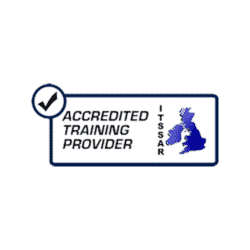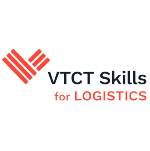Looking to hire an apprentice or upskill your workforce?
Students who complete this course will cover several types of removals. Ranging from households, to international and government buildings, the removals operative must be able to package items into boxes or crates and move them. The job role also includes having to load and unload different packaged items or equipment.
A removals operative will need to know how to use different variations of operating systems, computerised or manual, for daily tasks. This can also include processing customer orders, manage daily tasks and producing job sheet instructions.
The daily work of the removals operative includes interacting with customers, operational & warehouse supervisors, and additional colleagues on a daily basis.
A removals operative must have good communication skills, be able to keep the relevant team and customers informed throughout the process of jobs, and are confident in working on their own. Having good customer service skills and a focus on customer experience is also important.
The apprentice will learn how to follow operations, apply Standard Operating Procedures (SOPs) & policies, as well as decide what packaging materials to use that are appropriate for the job, and follow the process for moving handling, packing and unpacking items.
The apprenticeship is a 12-month commitment, with a 3-month End Point Assessment (EPA) at the end of your training.
Our apprenticeship team are on hand to help you through the course, and can provide help with any documents, to aid both you and your apprentice.
Your EPA is completed through a practical observation and assessment, where you will show the assessor how you have understood and acquired the knowledge, skills & behaviours throughout your apprenticeship to an occupational standard.
Forklift Operator training is also added as a bolt on to your employees apprenticeship. Get training for the safe operation of either Counterbalance; Reach; Pivot Steer; or Powered Pallet Forklift Truck.
*Please note that apprentices over the age of 19 have the option to complete functional skills Maths & English.
Our apprenticeship courses are intended for employers with an apprentice already working for their company.
What’s Required?
- 12-month training commitment
- Non-levy payers subject to a £250 contribution (levy pays are not subject to this)
- 80% commitment for on-the-job training (learning the job while they work)
What’s Received
- Access to online E-portfolio and e-learning
- Access to bespoke learning for functional skills (optional)
- Access to bespoke online apprenticeship units
- Option for either block release or day release course, depending on the employers/apprentices requirements
- Forklift Operator training added as a bolt on to your employees apprenticeship
Book Your Discovery Call
KSBs
Throughout the course, apprentices will build on the Knowledge, Skills and Behaviours (KSBs), which are used as a guide for the employee throughout their apprenticeship.
Knowledge
The key knowledge attribute apprentices will learn and need to show in their EPA include:
- The removals industry, such as types of services and employers.
- Health and safety regulations, standards, and guidance and impact on the role.
- Industry specific regulations and legislations relating to the moving and handling of items to include inland domestic moving, commercial moving, overseas moving, storage, working time directives and working hours.
Skills
The skills your apprentice will learn will be shown in a practical environment. Skills attained will include:
- Following procedures which are in line with health & safety regulations, standards, and guidance.
- Complying with regulations and legislations specific to the industry, relating to the moving and handling of items.
- Identifying and documenting hazards and risks within the workplace. Also, completing risk assessments.
Behaviours
The behaviours an apprentice will learn will be relevant to their job role. These behaviours will be identified through the students EPA, and include:
- Putting health and safety first.
- Considering the environment and sustainability.
- Supporting an inclusive workplace for example, respectful of different views.
Types of Training
Off-the-job
“Off-the-job” training is delivered by 2 Start Ltd during your apprentice’s normal working hours. This provides your apprentice with the support and guidance throughout their learnings. During this period, your apprentice will be given the following benefits:
Focused Environment
Completing their learnings away from the workplace allows apprentices to concentrate on their studies without the distractions of daily work tasks. This builds their knowledge without feeling the pressure of jobs they may be expected to complete in their daily job role, which gives them the opportunity to focus on their training.
Networking Opportunities
Coming away from the workplace and completing their education in a separate environment gives apprentices the time to connect with peers, instructors, and industry experts. This helps build a rapport with valuable professional networks.
Structured Learning
This provides apprentices with a solid foundation of theoretical knowledge and skills which are critical in their field. This can include classroom learning, eLearning, workshops, and other formal training settings. This helps them follow guidance according to their KSBs, providing a trusted framework.
Variety of Instructional Methods
There is a wide range of resources for the apprentices training which cater to different learning styles. This enhances the overall educational experience, while giving different options to how the apprentice can learn, so they can find the best learning method for them.
On-the-job
“On-the-job” training is delivered by the employer during your apprentice’s normal working hours. This is where they will relay their learning and training within their job role. The benefits of on-the-job-training include:
Practical Experience
This allows apprentices to refine their theoretical knowledge and apply this in real-world settings. Being able to gain hands-on experience helps to reinforce their understanding and proficiency.
Mentorship
Apprentices benefit from the guidance of professionals who work in their sector. These individuals can provide real life insights, feedback, and support. Because the apprentice has gained the theoretical knowledge, they can understand the context of what their mentor is discussing.
Adaptability
Working in a real-world environment helps apprentices develop essential soft skills such as problem-solving, communication, and teamwork, which are crucial for career success. They understand what the workplace is like and can use their initiative to use their soft skills effectively.
Balanced Skill Development
Apprentices gain a well-rounded education that includes both theoretical knowledge and practical skills. While theory-based learning helps build the stepping stones, the practical element solidifies their confidence within a working environment, while also building on their hands-on experience, which could help to reduce complacency.
Immediate Application
Learning in the workplace allows apprentices to see the direct relevance of their training. Reinforcing their learning through practical application straight away betters their understanding as to how certain components are completed in particular ways, making them more efficient and confident in their decision making.
Increased Engagement
The variety keeps the learning experience dynamic and engaging, reducing the risk of burnout or disengagement. Your apprentice may also have other ideas and suggestions to help with the workplace, which helps with their confidence in decision making.
Greater Job Readiness
Apprentices are better prepared to transition smoothly into full-time roles, equipped with both the technical and soft skills needed to excel. They won’t feel pressure, and they will be equipped with the KSBs essential for them to succeed.
Employer Benefits
Employers get the advantage of developing a skilled workforce that is tailored to their specific needs, reducing the skills gap and improving overall productivity. Also, recruiting a new employee is costly, and they have to learn and understand their duties and responsibilities in the workplace, as opposed to a current, upskilled employee who is already familiar with the business, as well as their job requirements.
Types of training
- Off-the-job (20%)
- ‘Off-the-job’ training is delivered by 2 Start Ltd during your apprentice’s normal working hours.
- On-the-job (80%)
- ‘On-the-job’ training is delivered by the employer during your apprentice’s normal working hours.










